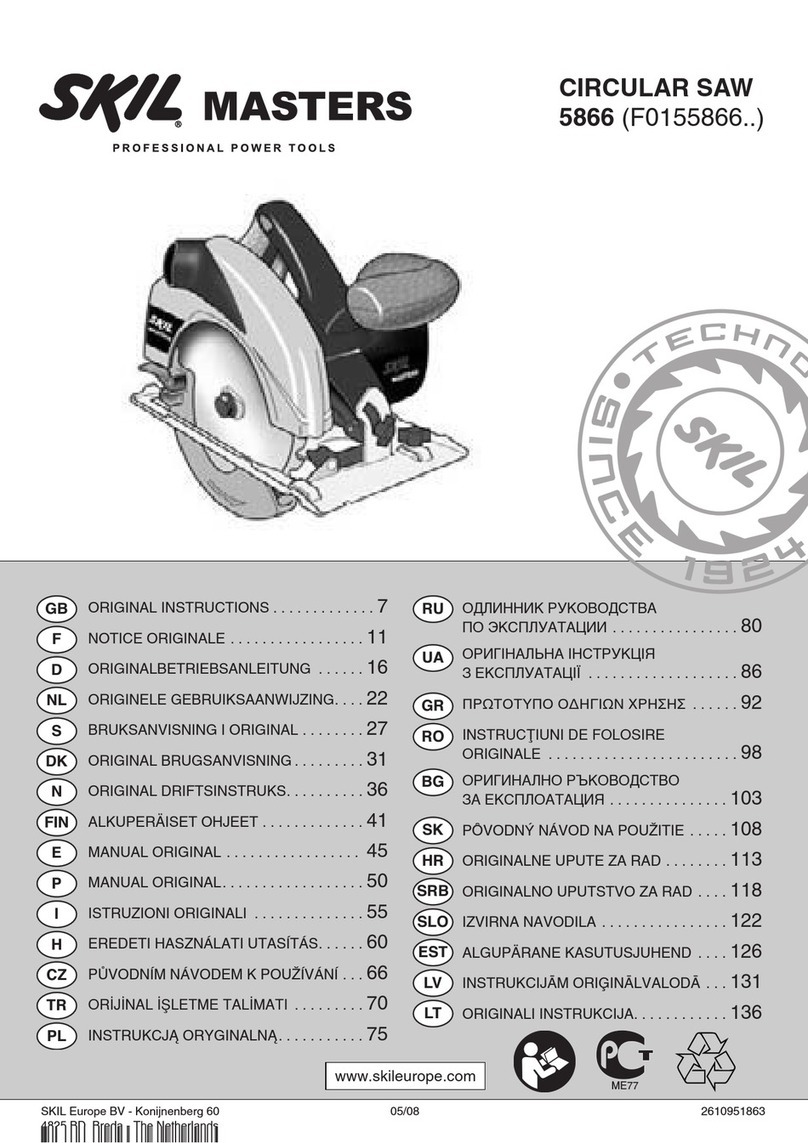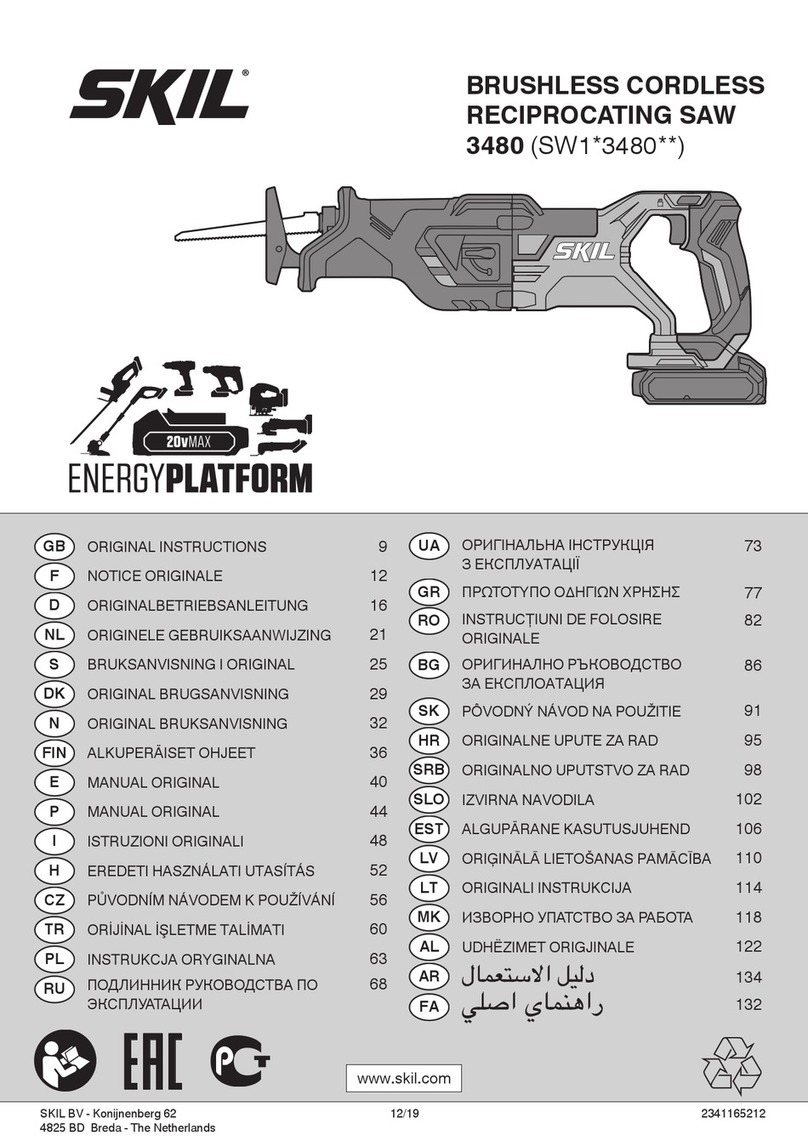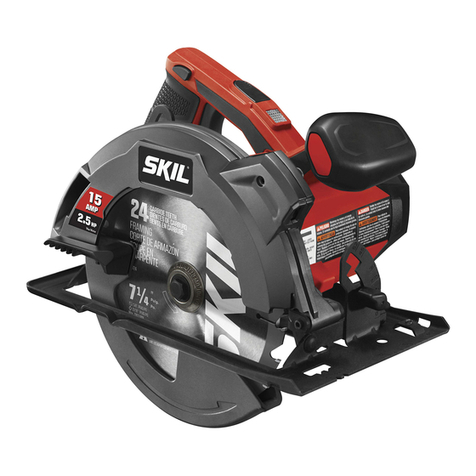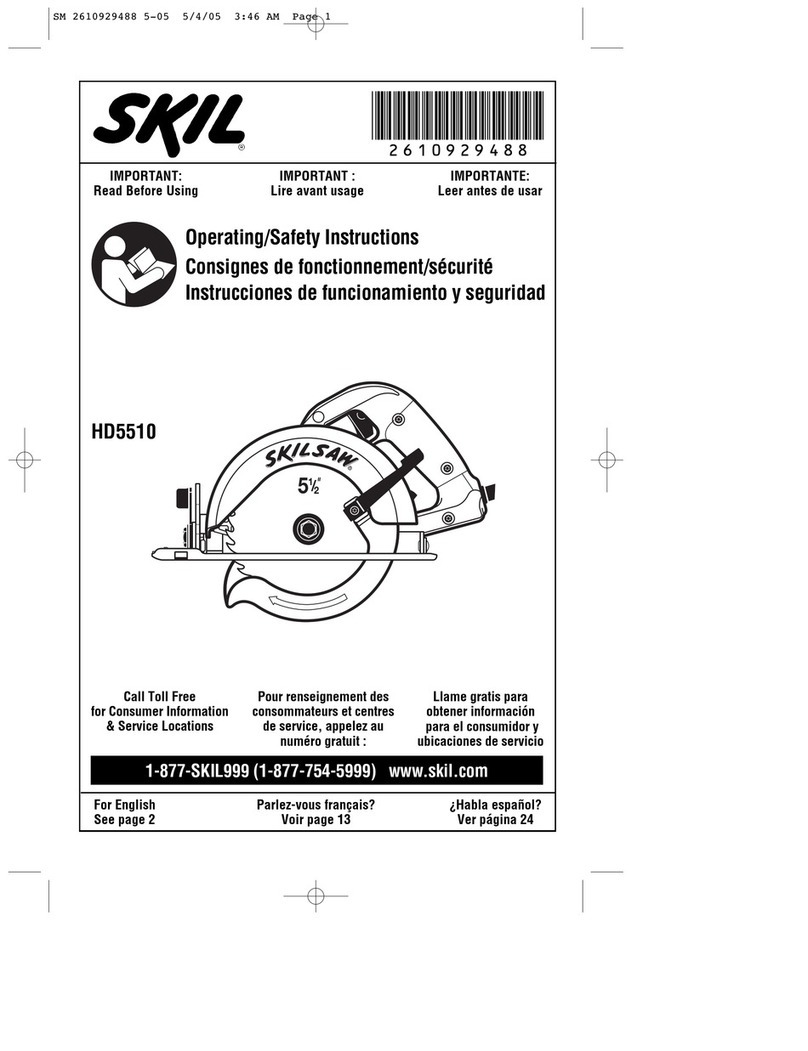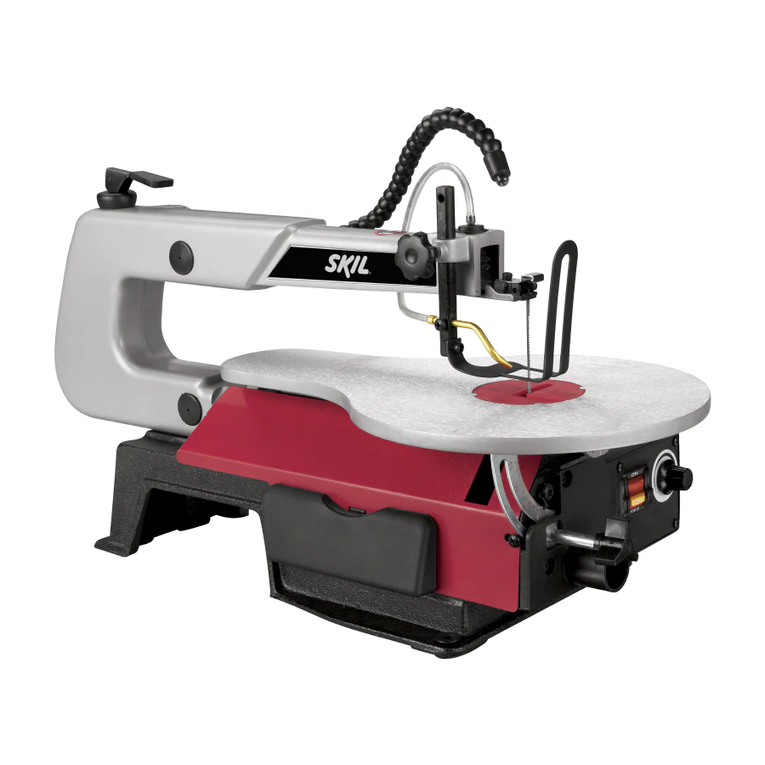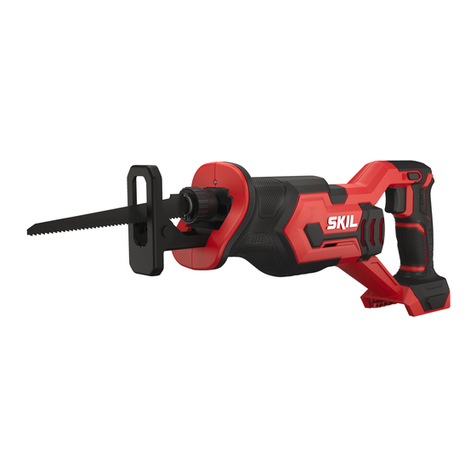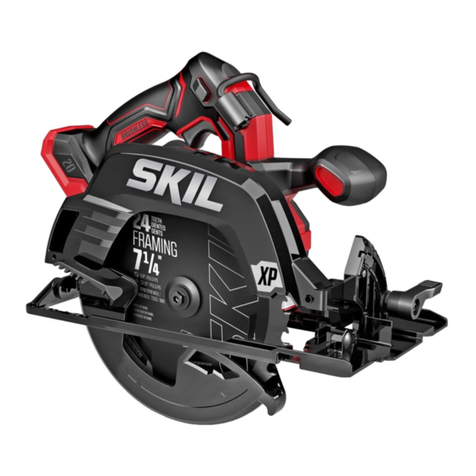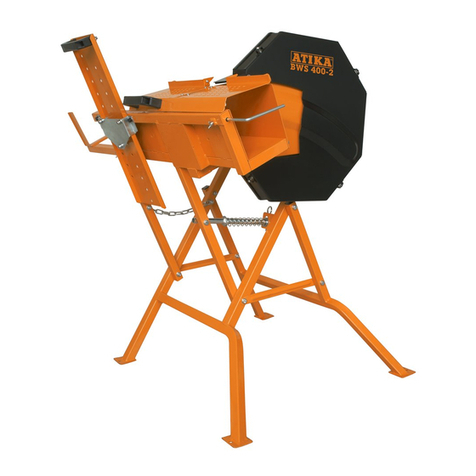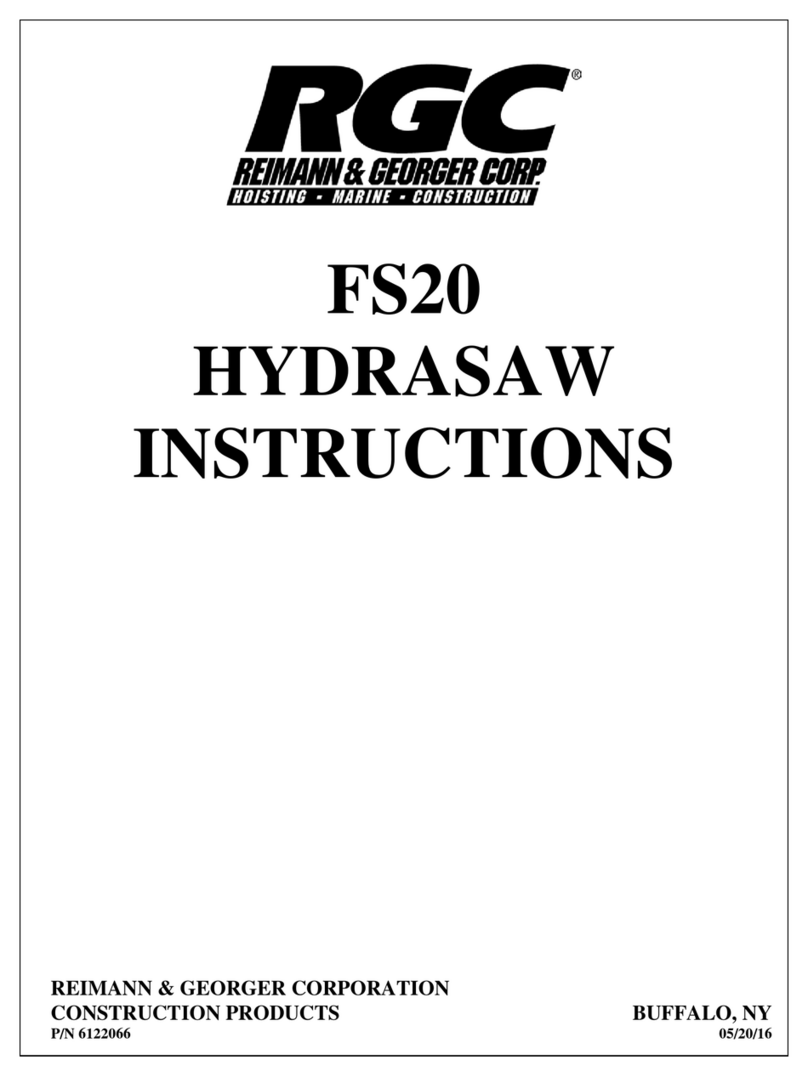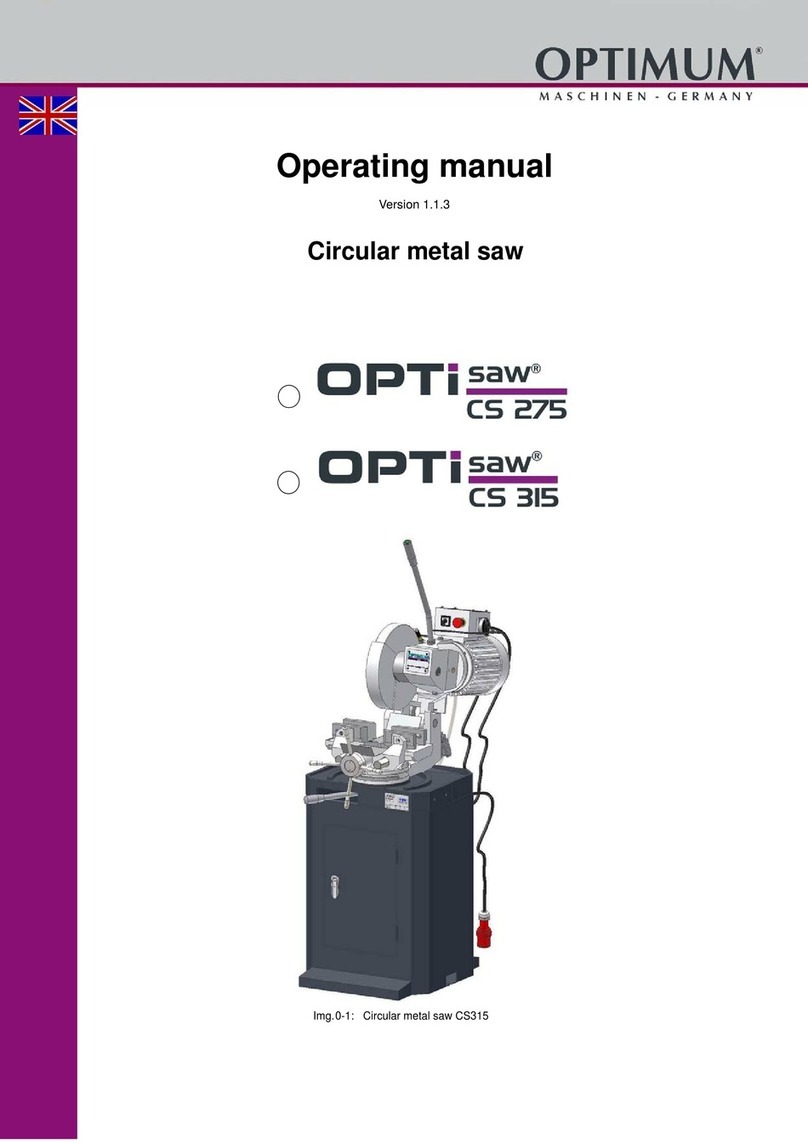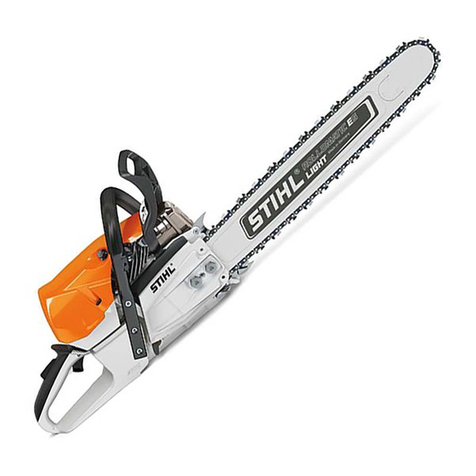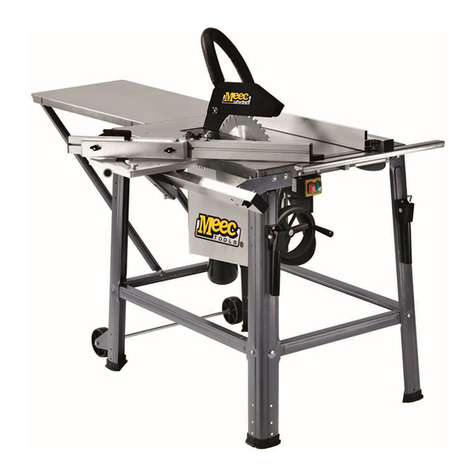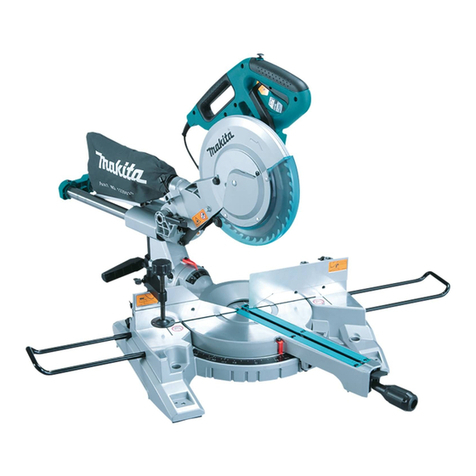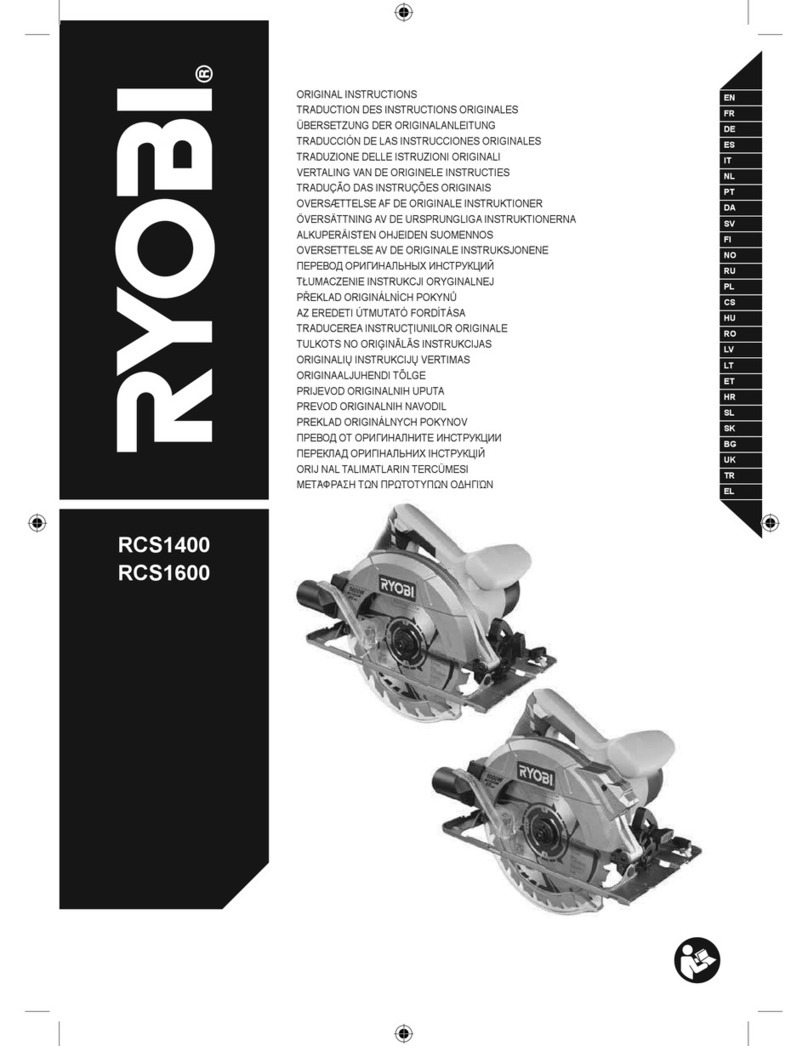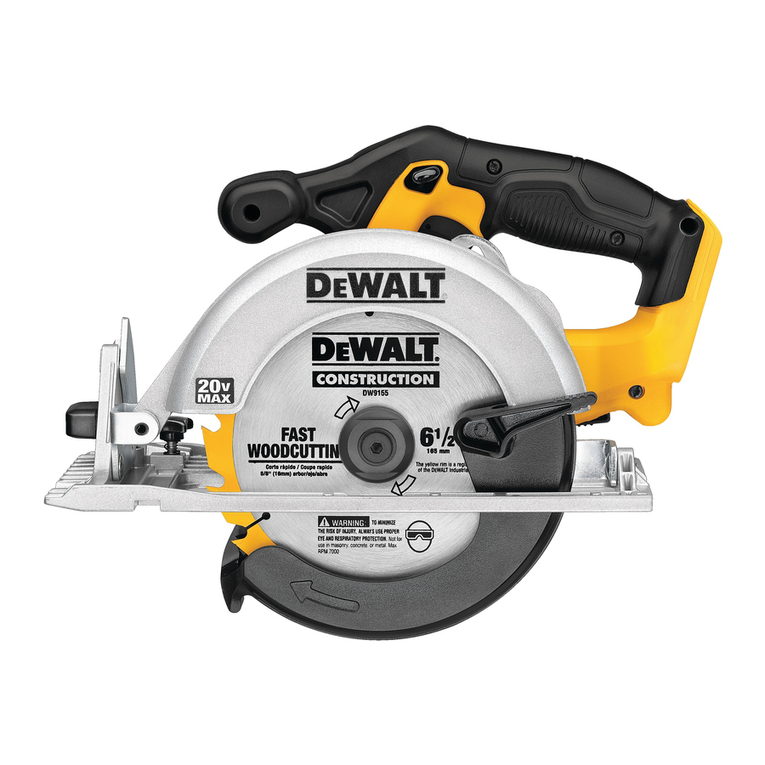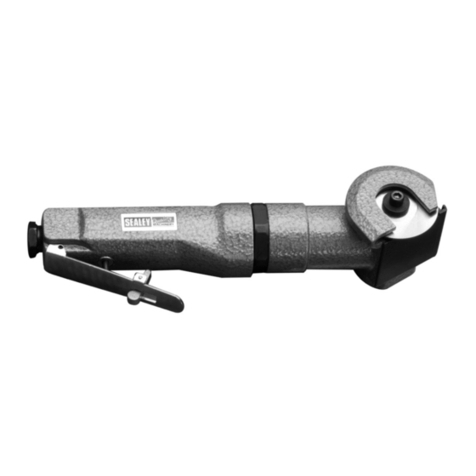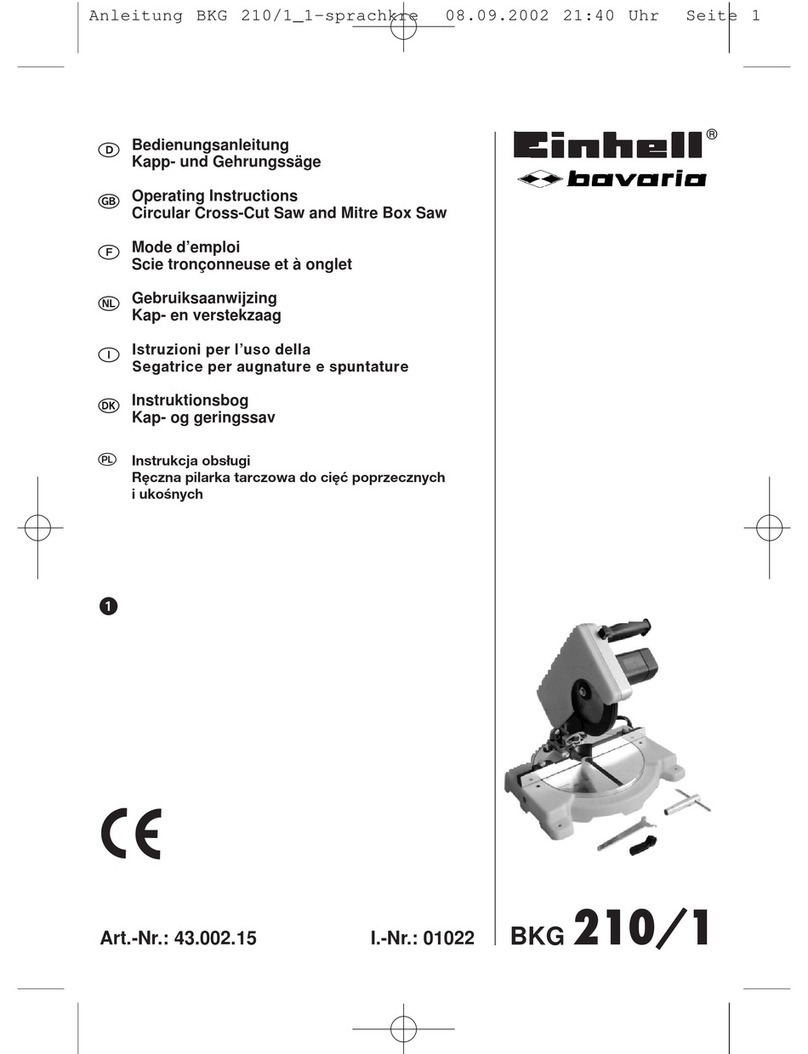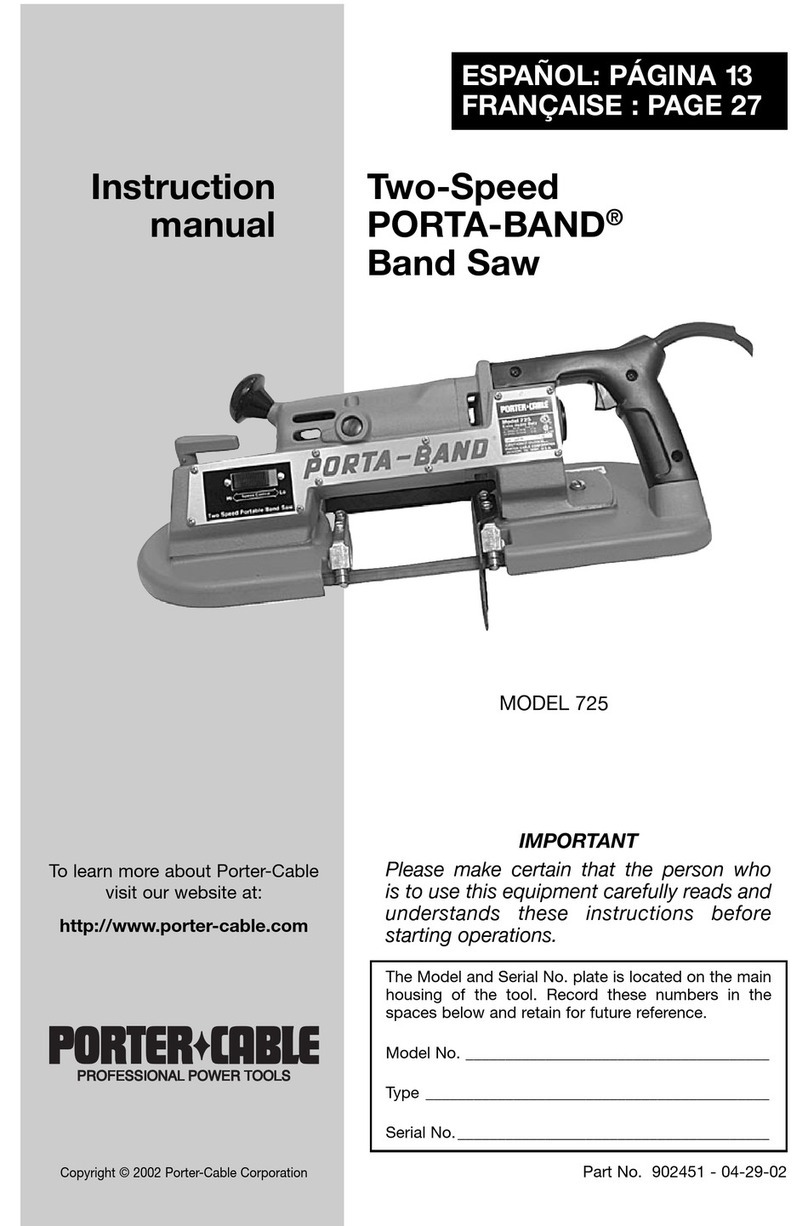5.
Motor Specifications and Electrical Requirements
General Specifications
Voltage Rating . . . . . . . . . . . . . . . . . . . .120 V, 60 Hz
Amperage Rating . . . . . . . . . . . . . . . . . . . . . . . .2.5 A
No oad Speed . . . . . . . . . . . . .No2800 min (SFPM)
Throat . . . . . . . . . . . . . . . . . . . . . . . . . . .9" (22.9 cm)
Blade ength . .59 1/4” (150.5 cm) - 59 1/2” (151 cm)
Blade Width . . . . . . . .1/8” (0.32 cm) - 3/8” (0.95 cm)
Cutting Capacity . . . . . . . . . . . . . . . . .3 1/2" (8.9 cm)
Table size . . . . . . . . . . . . 11 3/4 x 12" (30 x 30.5 cm)
Motor Specifications
In the event of a malfunction or breakdown, grounding
provides a path of least resistance for electric current to
reduce the risk of electric shock. This tool is equipped with
an electric cord having an equipment-grounding conductor
and a grounding plug. The plug must be plugged into a
matching outlet that is properly installed and grounded in
accordance with all local codes and ordinances.
This Band Saw is designed to use a 1720 RPM motor. It
is wired for operation on 110-120 volts, 60 Hz. alternating
current. Before connecting the motor cord to power
source, make certain the switch is in the “OFF” position
and be sure the electric current is of the same
characteristics as stamped on the band saw nameplate.
Connection To A Power Source
This machine must be grounded while in use to protect
the operator from electric shock.
Plug power cord into a 110-120V properly grounded type
outlet protected by a 15-amp dual element time delay fuse
or circuit breaker.
Not all outlets are properly grounded. If you are not sure
that your outlet, as pictured in Fig. A, is properly
grounded; have it checked by a qualified electrician.
To avoid electric shock, do not touch
the metal prongs on the plug when
installing or removing the plug to or from the outlet.
Failure to properly ground this power
tool can cause electrocution or
serious shock, particularly when used near metal
plumbing or other metal objects. If shocked, your
reaction could cause your hands to hit the tool.
If power cord is worn, cut or damaged
in any way, have it replaced
immediately to avoid shock or fire hazard.
Your unit is for use on 120 volts; it has a plug that looks
like the one in Figure A.
This power tool is equipped with a 3-conductor cord and
grounding type plug, approved by Underwriters
aboratories and the Canadian Standards Association.
The ground con ductor has a green jacket and is
attached to the tool housing at one end and to the
ground prong in the attachment plug at the other end.
If the outlet you are planning to use for this power tool is
of the two-prong type, DO NOT REMOVE OR A TER
THE GROUNDING PRONG IN ANY MAN NER. Have a
qualified electrician replace the TWO-prong outlet with a
properly grounded THREE-prong outlet.
Improper connection of the equipment-grounding
conductor can result in a risk of electric shock. The
conductor with insulation having an outer surface that is
green with or without yellow stripes is the equipment-
conductor. If repair or replacement of the electric cord or
plug is necessary, do not connect the equipment-
grounding conductor to a live terminal.
Check with a qualified electrician or service personnel if
the grounding instructions are not completely
understood, or if in doubt as to whether the tool is
properly grounded.
Always use proper extension cord. The use of any
extension cord will cause some loss of pow er. To keep
this to a minimum and to prevent overheating and motor
burn-out, use the table below to determine the minimum
wire size (A.W.G.) extension cord. Use only 3-wire
extension cords which have 3-prong grounding type
plugs and 3-pole receptacles which accept the tool’s
plug. Make sure your extension cord is in good
condition.
Extension Cord ength Wire Size A.W.G.
0-25 feet . . . . . . . . . . . . . . . . . . . . . . . . . . . . . . . . . . . .18
26-50 feet . . . . . . . . . . . . . . . . . . . . . . . . . . . . . . . . . .16
51-100 feet . . . . . . . . . . . . . . . . . . . . . . . . . . . . . . . . .16
DANGER
!
DANGER
!
WARNING
!
FIG. A
“SAVE THESE I STRUCTIO S”
